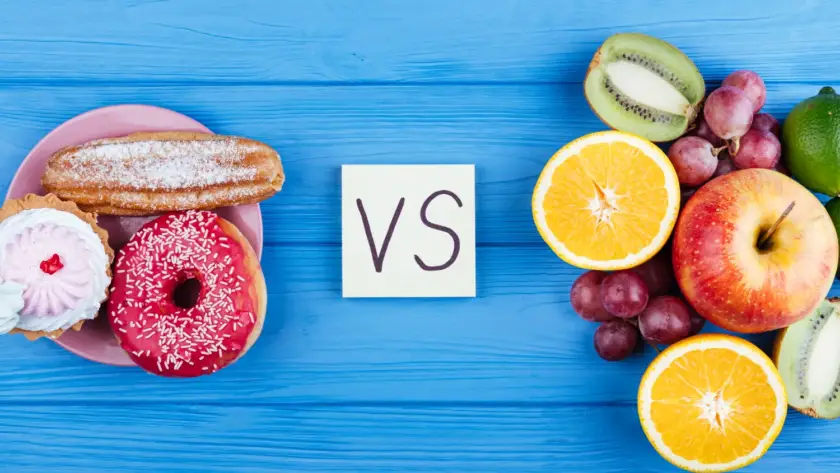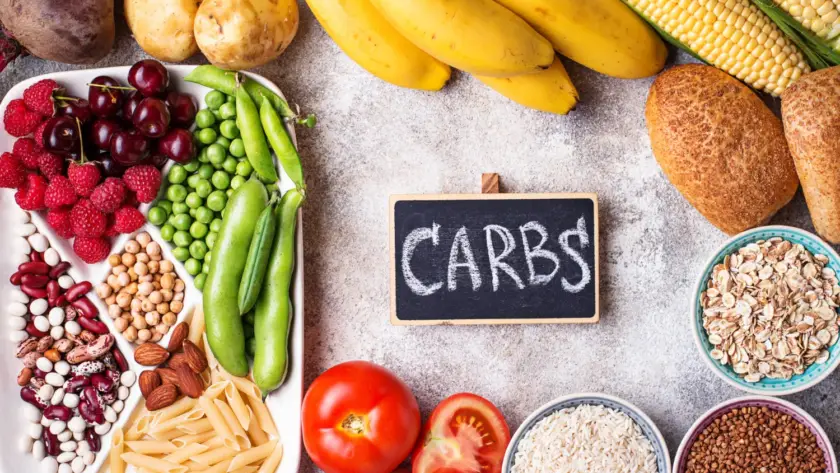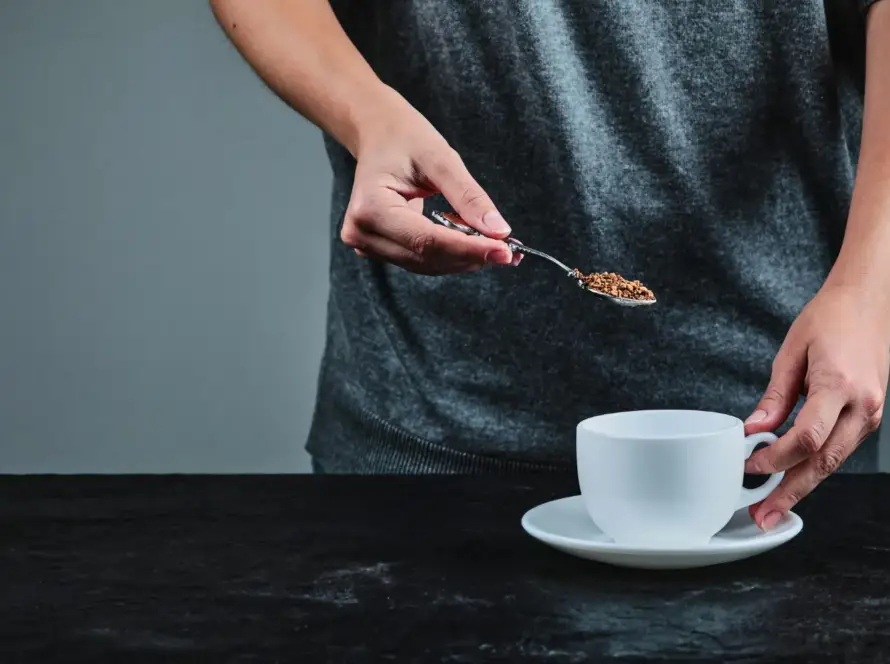For decades, carbohydrates have been unfairly labeled as the enemy of fitness and weight loss. Yet, not all carbs are created equal. Understanding the difference between healthy carbs vs bad carbs can completely change how your body feels, performs, and even looks.
In my own health journey, when I switched from sugary snacks to whole-grain oats and fruits, I noticed my energy levels became stable throughout the day. No more afternoon crashes or sugar cravings just consistent energy and improved focus.
Carbs are not the enemy; the right carbs are fuel. The key lies in recognizing which carbs to include and which to avoid for a truly balanced diet.
1. What Are Carbohydrates?
Carbohydrates, along with protein and fat, are one of the three main macronutrients your body needs. Their primary function is to provide energy for your brain, muscles, and organs.
When you eat carbs, your body breaks them down into glucose, which fuels every cell in your body. But how your body processes them depends on the type of carb you consume.
-
Complex carbs digest slowly, offering lasting energy.
-
Simple carbs digest quickly, often leading to spikes and crashes in blood sugar.
Understanding this distinction is crucial for anyone looking to manage weight, improve performance, or simply feel more energized.

2. Healthy Carbs vs Bad Carbs The Key Differences
Whole grains, fruits, and vegetables provide steady energy and essential nutrients, unlike refined and processed carbs that spike your blood sugar and cause cravings. According to research from the Harvard T.H. Chan School of Public Health, choosing whole grains, fruits, and fiber-rich carbs supports better blood sugar control and long-term energy.
Let’s simplify the difference between good and bad carbs:
| Healthy (Good) Carbs | Bad Carbs |
|---|---|
| Whole grains (brown rice, oats, quinoa) | White bread, white rice |
| Fruits and vegetables | Sugary drinks and candies |
| Legumes and lentils | Cakes, pastries, cookies |
| Sweet potatoes | Processed snack foods |
Complex Carbs Examples
-
Oats
-
Whole-grain bread
-
Brown rice
-
Quinoa
-
Beans and chickpeas
These are rich in fiber, vitamins, and minerals. They stabilize blood sugar, enhance digestion, and provide long-term satiety.
Simple Carbs Examples
-
Soda, candy, and white sugar
-
White pasta or refined flour
-
Sweetened cereals
These lack fiber and cause quick glucose spikes, which lead to energy crashes, fat storage, and cravings later in the day.
Learn more about balanced diet planning and how to combine foods for steady energy in our guide on 10 Best Weight Loss Foods to Burn Fat Fast.
3. Best Sources of Healthy Carbs
If you want steady energy and improved metabolism, focus on fiber-rich carbs that digest slowly and nourish your body.
Good Carbs List for Everyday Energy
-
Oats – A breakfast classic rich in fiber and beta-glucan.
-
Sweet potatoes – Naturally sweet, nutrient-dense, and great for muscle recovery.
-
Quinoa – A high-protein grain alternative ideal for fitness enthusiasts.
-
Brown rice and barley – Keep you full longer.
-
Fruits like apples, berries, and bananas – Provide vitamins and natural sugars.
-
Lentils and beans – Excellent for vegetarians and a good plant-protein source.
These are among the best carbs for energy, especially for athletes or anyone engaged in regular workouts.
For training support, read about Zone 2 Cardio Benefits to optimize fat burn with endurance.

4. Carbs to Avoid (Bad Carbs List)
While some carbs fuel your body, others can harm it when eaten in excess.
Bad Carbs List
-
White bread, pastries, and sugary cereals
-
Soft drinks, energy drinks, and flavored juices
-
Cookies, cakes, and doughnuts
-
Instant noodles and chips
These foods are high in refined flour, added sugars, and trans fats — a combination that causes blood sugar spikes, fat gain, and inflammation.
Consuming too many bad carbs increases the risk of insulin resistance, fatigue, and unhealthy cravings.
Replacing them with whole grain carbs or low glycemic carbs helps maintain steady blood sugar and supports long-term weight management.
5. Carbs and Weight Loss Finding the Balance
You don’t need to eliminate carbs to lose weight — you just need to choose smarter.
A healthy carb diet plan focuses on portion control, timing, and food quality.
Here’s how to make carbs work for you:
-
Combine carbs with protein and fiber — e.g., brown rice with grilled chicken or lentils with vegetables.
-
Choose low glycemic carbs like oats, quinoa, or whole-grain bread for gradual energy release.
-
Avoid eating refined carbs before bedtime, as they can spike insulin and disrupt fat burning during sleep.
When I replaced my refined carbs with whole grains and legumes for a month, I lost nearly 7 lbs without ever feeling deprived. My workouts felt easier, and my hunger stabilized — proof that carbs for fitness are about smart choices, not restriction.
To complement your diet, explore the Keto Diet Plan for Weight Loss for a low-carb, fat-burning alternative.
6. Expert Tips for a Balanced Diet
Balanced nutrition means eating the right mix of carbs, protein, and healthy fats. Follow these simple guidelines:
-
Plan your meals in advance. Include healthy carb meals like oatmeal, brown rice, or lentil soup.
-
Hydrate regularly. Water helps with digestion and nutrient absorption.
-
Practice mindful eating. Eat slowly and recognize fullness cues.
-
Time your carbs. Consume complex carbs before workouts for optimal energy.
-
Add variety. Rotate between fiber-rich carbs like quinoa, oats, and sweet potatoes for maximum nutrients.
Pair your diet with strength training for best results — start with our guide on Why Protein Is Essential for Weight Loss and Muscle Growth.
7. Real-Life Experience: My Carbs Transformation
When I first began my fitness journey, I made the classic mistake of cutting out all carbs. Within a week, I felt tired, moody, and unmotivated. Then I learned the power of healthy carbs.
I began replacing white rice with brown rice and sugary snacks with apples or Greek yogurt. Within three weeks:
-
My energy improved noticeably.
-
Cravings almost disappeared.
-
I lost 4 pounds without crash dieting.
-
My workouts became more productive and enjoyable.
That’s when I realized the truth — carbs aren’t bad; choosing the right carbs changes everything.
Conclusion: Focus on Moderation, Not Elimination
Carbs are not your enemy — processed carbs are.
The goal is not to remove carbs entirely, but to balance them with proteins, healthy fats, and fiber for long-lasting energy and optimal health.
Choose whole grain carbs, fiber-rich foods, and natural sources over sugary, refined options. When you eat smart, your body thanks you with better energy, mood, and performance.
Start your balanced journey today — eat clean, move daily, and enjoy your meals guilt-free.
For complete fitness guidance, visit Health and Fitness Care for expert-backed articles and healthy living tips.
FAQs: Healthy Carbs vs Bad Carbs
1. Are all carbs bad for weight loss?
No. The key lies in the type and portion. Healthy carbs for weight loss, like oats, quinoa, and fruits, support metabolism and energy, while refined carbs hinder progress.
2. Can I eat carbs at night?
Yes, if you choose low glycemic carbs such as sweet potatoes or lentils. Avoid sugary or processed carbs before bed to prevent fat storage.
3. What are the best carbs before a workout?
The best carbs for energy include oatmeal, bananas, or whole-grain toast. These provide a steady glucose release for improved endurance and focus.
4. Are fruits considered healthy carbs?
Absolutely. Fruits are natural complex carbs packed with fiber, vitamins, and antioxidants. Just be mindful of portions if you’re managing blood sugar levels.
5. What’s the difference between good and bad carbs?
Good carbs are whole, unprocessed, and fiber-rich—they digest slowly. Bad carbs are refined, sugary, and stripped of nutrients, leading to energy crashes and cravings.
6. Can I include carbs in a high-protein or keto-style diet?
Yes, but moderately. Focus on whole grain carbs or small portions of fiber-rich carbs for better balance.
For low-carb ideas, read Best Pre-Workouts That Really Give You Next-Level Energy.



